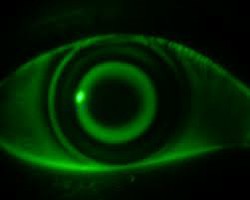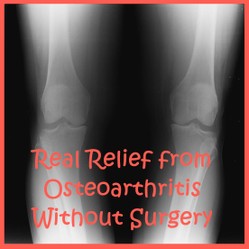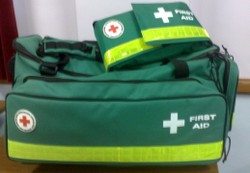Many people prefer to go on with their daily activities without contact lenses or glasses. The only permanent solution for correcting permanent vision problems lies in undergoing a refractive surgery such as LASIK. Nevertheless, several people are not comfortable to undergo a LASIK procedure owing to the perceived dangers associated with it. However, a ray of hope now lies in undergoing a more secure procedure known as orthokeratology, or ortho-k.

Orthokeratology (ortho-k)
by CRfan
Ortho-k involves wearing special RGP contact lenses overnight to correct myopia and astigmatism.
For Treating Myopia and Astigmatism
Ortho k is effective in correcting nearsightedness (myopia) and to a smaller extent, astigmatism. In this therapy, patients wear special contact lenses, which are permeable to gas during the night to reduce myopia and to re-shape the cornea. Normally, Myopia exists because of the corneas being too steep. Lenses meant for ortho-k therapy work by compressing the cornea and making them flat in order to compensate for myopia.
Ortho k lenses have been in existence for approximately the same period as the gas permeable lenses. Eye doctors specializing in contact lenses have experimented with cornea reshaping for very many years.
Advanced Ortho-k: FDA Approved
In 2002, Paragon Vision Sciences acquired the rights to practice Corneal Refractive Therapy by the FDA as a solution to reshaping the cornea overnight. Currently, Paragon Vision is the most-highly rated ortho-k system on the market.
Another FDA approved company, Bausch & Lomb has its own ortho-k system known as Vision Shaping Treatment (VST). Many other companies offer ortho-k products, however without an approval from the FDA.
All optometrists seeking to correct their patient’s eyes using ortho-k lenses must undergo training and certification with each FDA approved company.
Who Is Eligible For Ortho-k?
The FDA has approved different amounts of myopia that Paragon and Bausch & Lomb’s can treat respectively using ortho-k systems. This threshold is also different from what eye care specialists can treat on a routine basis. The FDA approvals are as follows:
Paragon CRT:
Up to -6.00 Diopters (D) of myopia, and
Up to -1.75 Diopters (D) of astigmatism
B & L VST:
Up to -5.00 Diopters of myopia
Up to -1.50 Diopters of astigmatism
Majority of eye specialists will consider a patient a likely candidate of ortho-k if they have -4.00 D or less of myopia and astigmatism from -0.25 to -0.50 D. After undergoing Ortho-k therapy, the likelihood of astigmatism manifestation is greatly minimized.
There is no specific age limit for reshaping of the cornea, so even children are allowed to take the procedure. This procedure is very common in athletes and very active persons. Teenagers will find CRT a good option for them, given that they are not eligible to have LASIK surgery. They will find CRT a good choice for them, more so if they actively participate in sports such as football.
How Long Will I Wait Before Seeing A Difference?
It takes between two to three weeks for most patients who start ortho-k therapy to notice the difference. However, it may even take longer for patients with astigmatism and higher prescriptions. At the initial stages, your vision may fluctuate in addition to experiencing side effects such as glare and halos as the cornea adjusts to a new shape. These effects should last longer after wearing the lenses on a regular basis. Ideally, you are advised to go through the whole day without using the lenses.
If you stop using the lenses, your cornea should return to its normal shape just after a few days. It has been noted that some long-term patients of ortho-k therapy can go through a day; and in some cases an entire week without the need to wear their lenses.
How Good Will My Vision Be?
Most doctors prefer working with patients that they consider good candidates for achieving a 20/20 vision. 20/40 works, as a bare minimum for it is the legal driving limit in most states.
An FDA approval study for Paragon lenses found that 93% of patients achieved a vision of 20/32 or better, and 67% of patients attained a vision of 20/20 or better. For patients on lenses using VST technology, 95% achieved a vision of 20/40 or better, and another 73% attained a vision of 20/20 or better. In all these studies, the patients were observed over a period of more than nine months.
How Does It Feel To Wear Ortho-k Lenses?
Gas permeable lenses are becoming rarer these days due to the option of soft lenses for many patients. Initially gas permeable lenses are more easily felt by the wearer but become more comfortable as the eye adapts.
If You've Tried Ortho-k Did It Work For You?
You might also like
Painfree Arthritic Knees Without SurgeryAPOS therapy saved my life. I was on a fast downhill spin into disability, se...
First Aid: Would you Know What to Do?A medical emergency could happen at any moment. The question is whether you h...



 How The FDA Approves New Medicineson 08/16/2013
How The FDA Approves New Medicineson 08/16/2013
 10 Tax Mistakes Business Owners Makeon 08/05/2013
10 Tax Mistakes Business Owners Makeon 08/05/2013
 Accessories For Traveling With Jeweleryon 02/12/2013
Accessories For Traveling With Jeweleryon 02/12/2013
 Stages of the Sleep Cycleon 09/23/2012
Stages of the Sleep Cycleon 09/23/2012


Comments